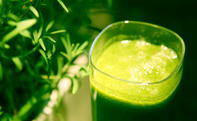The practice of juicing fruit and vegetables is older than agriculture itself. Hunter-gatherer people have collected ripened fruit in simple vessels made from organic materials and by simply transporting these ripe fruits, it yielded juice and often a fermented (e.g. wine) or oxidised (e.g. vinegar) product.

With more advanced tool-making came more sophisticated methods of producing juice and with this, containers evolved.
Juice processing today involves careful agricultural planning, proper post-harvest handling of fruit and vegetables, proper hygiene and food safety and effective packaging, preservation, storage and transportation.
The most popular fruits for fruit juice are orange, apple, grape and pineapple. Tomato juice and tomato blends account for over 90 per cent of the non-fruit juice trade.
Juice in South Africa
In South Africa, the South African Fruit Juice Association (SAFJA) supports the development and promotion of the fruit juice industry in South Africa and aims to increase the consumption of its products and encourage the growth of the industry.
South Africa processes around 1 million tonnes of fresh fruit into juice products of which apple concentrate and orange juice are the most produced products. Other fruits used for juice in South Africa are grapes, pineapples, mangoes and deciduous fruit such as pears and peaches.
Around 40% of South African juices are exported to the African continent, with exports also going to international buyers worldwide in the form of bulk concentrates as well as in retail packaging.
World Juice Production
World juice production has grown over the last decade with developing countries contributing over 60 per cent of fruit juice exports. These include Vietnam (tropical juices and pineapple juice), Egypt (orange juice), the Philippines (coconut water and concentrated pineapple juice) and Peru (tropical juices such as passion fruit).
However, India is one of the world’s second-largest producers of fruit and vegetables, but only an estimated 1.5% is used for further processing and it is estimated that about 20% is lost due to spoilage.
Europe is the largest importer (55%) of fruit juices with Central and Eastern Europe as well as Poland growing as juice exporters.
Brazil, the largest citrus producer, is also the world’s largest producer of citrus juice and accounts for about 25% of world production. The USA is second in the citrus juice market. Orange juice production was estimated to decrease by 24% to 1.6 million tonnes (2017/18) as a result of a shortage of oranges for processing in Brazil and the United States.
China and Poland are the world’s top suppliers of apple juice while Germany is the largest importer of apple juice. Argentina is the leading producer of grape juice in the world.
Poland is an important producer of raspberry, blackberry, black currant and Aronia pulp and puree, used to produce so-called superfruit juice products.
Exotic juices such as mango, watermelon, and kiwi are becoming more popular and a growing trend to vegetarianism has sparked an increase in vegetable juice blends incorporating carrot, beetroot, cucumber, spinach, kale, parsley and other herbs and vegetables.
Advantages of Juicing
Apart from being a source of fluids, fruit juice provides vitamins and minerals including vitamins B and C, folate, potassium and antioxidants to a diet. Juice can also be blended and enriched with nutrients or phytochemicals to increase its nutritional value. Often, fruit juice blends are also more flavourful than the fruit itself and are more convenient than eating the whole fruit.
Juicing is also a very effective way of utilizing blemished and poorly shaped fruit that would not be suitable or appealing to sell in a retail store.
In addition, juicing can add value to a farming enterprise and is a way to utilize overproduction. It will, however, require additional resources as well as storage, chilling, processing and packaging facilities.
By Marinda Louw